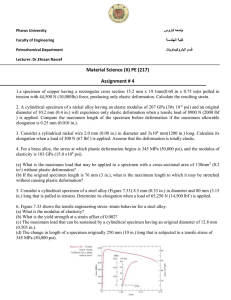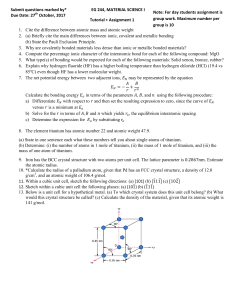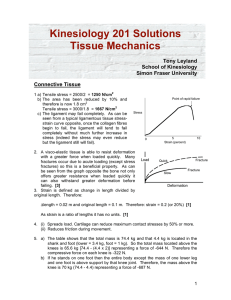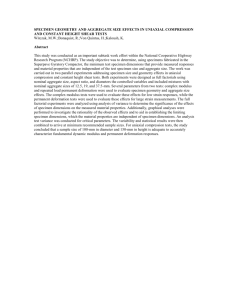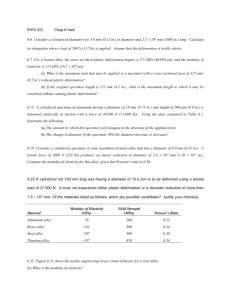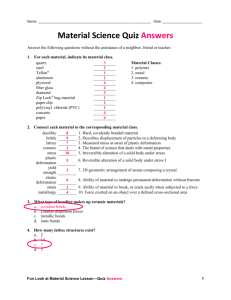Materials Science Problems: Crystal Structure & Mechanics
advertisement
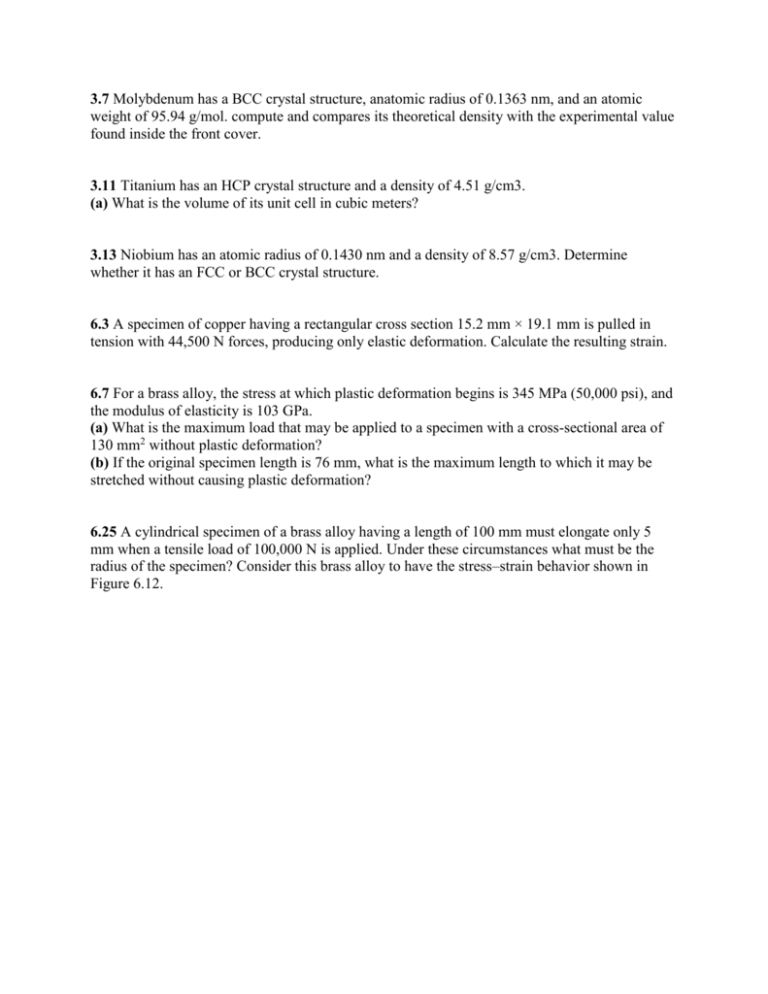
3.7 Molybdenum has a BCC crystal structure, anatomic radius of 0.1363 nm, and an atomic weight of 95.94 g/mol. compute and compares its theoretical density with the experimental value found inside the front cover. 3.11 Titanium has an HCP crystal structure and a density of 4.51 g/cm3. (a) What is the volume of its unit cell in cubic meters? 3.13 Niobium has an atomic radius of 0.1430 nm and a density of 8.57 g/cm3. Determine whether it has an FCC or BCC crystal structure. 6.3 A specimen of copper having a rectangular cross section 15.2 mm × 19.1 mm is pulled in tension with 44,500 N forces, producing only elastic deformation. Calculate the resulting strain. 6.7 For a brass alloy, the stress at which plastic deformation begins is 345 MPa (50,000 psi), and the modulus of elasticity is 103 GPa. (a) What is the maximum load that may be applied to a specimen with a cross-sectional area of 130 mm2 without plastic deformation? (b) If the original specimen length is 76 mm, what is the maximum length to which it may be stretched without causing plastic deformation? 6.25 A cylindrical specimen of a brass alloy having a length of 100 mm must elongate only 5 mm when a tensile load of 100,000 N is applied. Under these circumstances what must be the radius of the specimen? Consider this brass alloy to have the stress–strain behavior shown in Figure 6.12.
